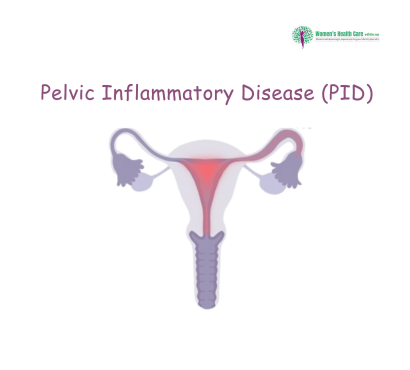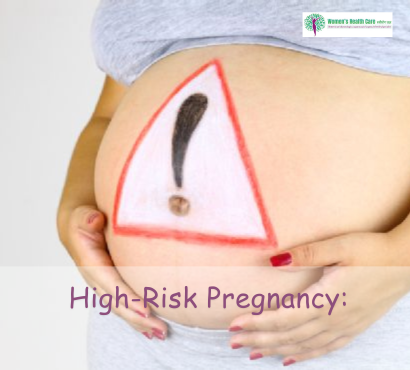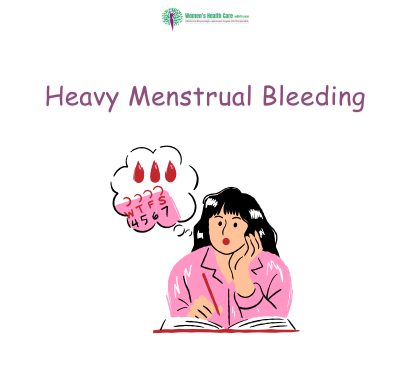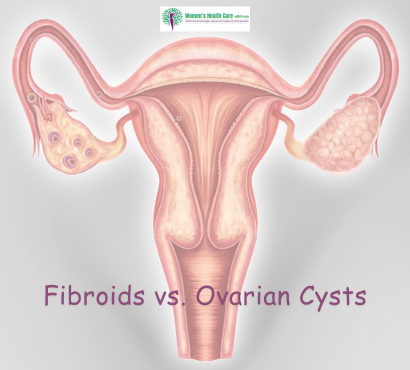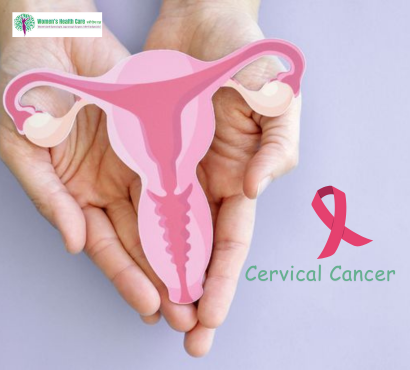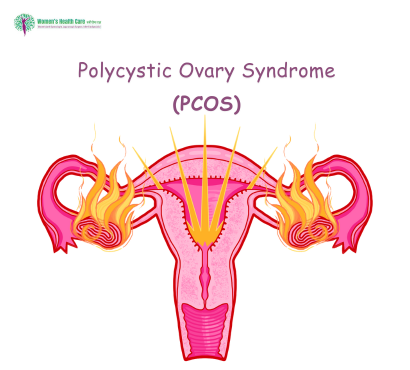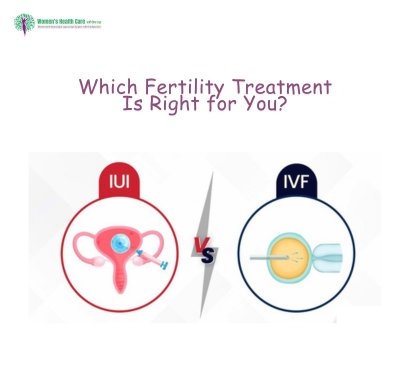For many women, visiting a gynecologist in Pune might be a source of anxiety or confusion. However, gynecologists in Pune are essential partners in women’s health, guiding them through every stage of life from puberty through menopause. This comprehensive guide will explain who gynecologists are, what they do, and why regular visits are important for maintaining reproductive and overall health. Who is a Gynecologist? A medical doctor specialized in women’s reproductive system health. Trained to manage menstrual health, sexual health, fertility, pregnancy, childbirth, and menopause. Often also trained as obstetricians (OB-GYNs), handling pregnancy and delivery. Services Provided by a Gynecologist Preventive Care and Screenings Routine pelvic exams Pap smear and HPV testing for cervical cancer Breast examinations and mammography referrals STI screenings Contraceptive counseling and prescriptions Vaccinations including HPV, rubella Diagnosis and Treatment Menstrual irregularities (heavy, painful, or absent periods) Infections (vaginal, pelvic) Hormonal disorders like PCOS or thyroid problems Uterine fibroids, ovarian cysts, endometriosis Cancers of the reproductive organs Infertility assessment and management Pregnancy and Childbirth Care Preconception counseling Antenatal visits and monitoring Pregnancy complications management Delivery and postpartum care Surgical Procedures Minor: Pap smears, biopsies, IUD insertions Major: Laparoscopy, hysterectomy, cesarean sections What to Expect During a Gynecological Visit? Medical and menstrual history discussion Physical exam including breast and pelvic exam Possible diagnostic tests: ultrasound, Pap smear, blood tests Personalized health advice and treatment plans When Should You Visit a Gynecologist? Onset of menstruation or puberty Painful, irregular, or heavy periods Unusual vaginal discharge or odor Pelvic pain or pain during intercourse Planning for pregnancy or fertility issues Menopause symptoms Routine annual check-ups Common Myths About Gynecologists Myth Fact Pap smear is painful Usually causes mild discomfort, never extreme pain HPV vaccine means no more Pap smears Screening is still needed as vaccine doesn’t cover all HPV types Menopausal women don’t need checkups Postmenopausal screening is essential for continued cancer risk Gynecological visits in Pune are only for sexual health They cover comprehensive women’s health at all life stages FAQs At what age should girls see a gynecologist? Typically between ages 13-15 or soon after menstruation starts. Early visits focus on education and menstrual health. How often should women get a gynecological check-up? Most women should be seen annually or as recommended based on age, risk, and symptoms. Is an internal exam always needed during the first gynecologic visit? Not necessarily. For young or asymptomatic patients, the first visit may involve education and discussion without an internal exam.
Pelvic Inflammatory Disease (PID): Symptoms, Risks, and Treatment
Pelvic Inflammatory Disease (PID) is a common yet often underdiagnosed and misunderstood health issue affecting millions of women across India. Its impacts range from mild discomfort to severe reproductive complications, including fertility loss and chronic pelvic pain. This comprehensive blog sheds light on what PID is, how to recognize the symptoms, identify risk factors specific to Indian women, and understand the latest treatment approaches for effective management and prevention. What Is Pelvic Inflammatory Disease (PID)? PID is an infection of the female reproductive organs—including the uterus, fallopian tubes, and ovaries—primarily caused by sexually transmitted bacteria ascending from the vagina or cervix. If untreated, PID can cause pelvic adhesions, chronic pain, and increase the risk of ectopic pregnancies. Common Symptoms of PID Lower abdominal or pelvic pain, which may be mild to severe Heavy, foul-smelling, or unusual vaginal discharge Painful or difficult urination Pain during sexual intercourse Irregular menstrual bleeding or spotting Fever, chills, and nausea in severe infection Fatigue and general malaise Note: Some women, especially in early or mild PID, may show minimal or no symptoms, making screening and awareness critical. Risk Factors for Pelvic Inflammatory Disease in India Multiple sexual partners or unprotected sex History of sexually transmitted infections (STIs) such as chlamydia or gonorrhea Use of intrauterine devices (IUDs), especially soon after insertion without follow-up Early age of sexual activity or sexual abuse Poor genital hygiene or recurrent bacterial vaginosis Previous episodes of PID or pelvic surgery Lack of awareness and limited access to early screening and treatment Diagnosis and Testing Detailed medical and sexual history Pelvic examination: checking for cervical motion tenderness and adnexal tenderness Lab tests: vaginal/cervical swabs, STI screening, complete blood count Ultrasound to detect an abscess or inflammation Laparoscopy in uncertain or severe cases for direct visualization Treatment of PID Antibiotic therapy: Broad-spectrum antibiotics initiated promptly to cover likely bacterial causes, often continued for 14 days. Pain relief: NSAIDs and supportive care. Hospitalization: For severe cases, intravenous antibiotics and surgical drainage as needed. Partner treatment: Simultaneous STI treatment for sexual partners to prevent reinfection. Follow-ups: To ensure infection resolution and manage complications like infertility or chronic pain. Complications of Pelvic Inflammatory Disease Chronic pelvic pain due to adhesions or scarring Infertility from damaged fallopian tubes (leading cause in India) Increased risk of ectopic pregnancy, a medical emergency Recurrent PID episodes with progressive damage Preventive Measures Consistent use of condoms during sexual intercourse Regular screening for STIs in sexually active women Timely treatment of vaginitis or cervicitis Proper follow-up after IUD insertion Education and awareness programs, especially in rural or underserved communities Cultural and Social Factors in India Stigma around sexual health often delays care-seeking. Lack of open communication with healthcare providers may lead to untreated infection. Women’s empowerment and health education are critical to reducing PID burden. FAQ Can PID be cured completely? Early and proper treatment cures the infection and prevents most complications, but delayed treatment can cause permanent damage to reproductive organs. If I have mild pelvic discomfort, should I get tested for PID? Yes, especially if accompanied by abnormal discharge or fever. Early diagnosis improves outcomes. Are there home remedies for PID? No. PID requires medical treatment. Home remedies may relieve symptoms but do not treat the underlying infection.
High-Risk Pregnancy: What Does “High-Risk” Actually Mean?
A pregnancy is labeled “high-risk” when the mother, baby, or both face problems that could affect pregnancy outcomes—sometimes from the start, sometimes emerging along the way. This does not guarantee problems, but does mean extra vigilance and specialized antenatal care are needed. Common Causes in India Maternal Age: Under 18 or over 35 years old Medical Conditions: Hypertension, diabetes, thyroid problems, asthma, epilepsy, kidney or heart diseases Previous Obstetric History: Miscarriages, stillbirth, early labor, c-sections, complicated previous pregnancies Pregnancy Complications: Pre-eclampsia, gestational hypertension/diabetes, placenta previa/accreta Multiple Pregnancies: Twins, triplets Lifestyle Factors: Smoking, alcohol, high BMI, undernutrition Low Resources or Delayed Antenatal Care: Especially in rural India High-Risk Pregnancy: Key Statistics in India Nearly 40% of pregnant Indian women face one or more high-risk indicators. Complications are a leading cause of maternal and newborn deaths—most preventable with better monitoring and awareness. Social change (late marriage, focus on careers, fertility treatments) is leading to more first pregnancies after age 35. Monitoring: How is a High-Risk Pregnancy Followed? Frequent Doctor Visits: Monthly to every 2 weeks in early pregnancy; weekly or more in the last trimester for at-risk mothers Lab Tests: Blood count, blood sugar (fasting, post-meal, HbA1c) Thyroid profile, urine protein, liver/kidney function Infection screens, iron, and vitamin levels Ultrasonography and Imaging: First-trimester scan, anomaly scan (around 18-20 weeks), growth scans, and Doppler studies for baby’s well-being Assessment of placenta location and amniotic fluid Specialist Input: Cardiologist/endocrinologist/nephrologist as required Nutritionist/dietitian for meal plans in diabetes or preeclampsia Fetal Surveillance: Kick counts, non-stress tests (NST), and biophysical profiles in late pregnancy Prevention: Can High-Risk Pregnancies Be Avoided? Not all can be prevented, but risks drop dramatically with: Early, consistent prenatal care (antenatal registration ASAP) Optimal physical health before conception—manage blood pressure, sugar, weight, thyroid Avoiding smoking/alcohol, exposure to toxic chemicals Preconception vitamins (folic acid, iron) Managing Common High-Risk Scenarios 1. Hypertension and Preeclampsia Monitor BP at home, record all readings, report any swelling, headaches, or vision changes Reduce salt in diet Rest (side-lying) as needed Medications safe for blood pressure in pregnancy (as per doctor) 2. Gestational Diabetes Regular glucose monitoring, targeted diet plan with dietitian Exercise (walking, yoga); medicine or insulin if needed Monitor baby growth and avoid overdue pregnancies 3. Thyroid Disorders Strict medicine adherence, regular thyroid function tests Adjust dose every trimester as needed 4. Multiple Pregnancy More frequent scans, nutrition support (protein/iron/calorie needs go up) Monitoring for preterm labor Planning for possible NICU 5. Previous Loss or Preterm Birth Earlier, more intensive monitoring Cervical length measurement, possibility of progesterone or cerclage stitch Lifestyle & Home Care: What Indian Families Should Do Balanced nutrition: High-protein, iron, calcium, folate, fresh seasonal fruits/veggies; limit processed food Routine activity: Light household work, walking, and prenatal yoga (doctor approved) Rest: Nap/rest when tired, adjust work schedule as needed Mental health: Share worries, ask for help, join prenatal groups or WhatsApp support circles Managing Hospital Stays Some high-risk pregnancies require brief or extended hospital admission—for observation, medication, or delivery planning. Early communication can help mothers and caregivers plan support and finances. Delivery: When and How? Vaginal delivery is possible in many high-risk scenarios if the mother and baby are stable; C-section is planned for placenta previa, twin A breech, severe hypertension, or baby distress. Delivery is planned in a higher-level facility with blood bank and NICU access. Postpartum Considerations Monitor BP, sugar, and thyroid post-delivery—complications can persist or emerge Watch baby for feeding, color, activity; early gynecologist checkups are key Family/friend support for household duties and mother’s rest FAQ Can I have a safe and healthy baby if my pregnancy is high-risk? Absolutely—most high-risk pregnancies have healthy outcomes with early detection, regular monitoring, and close teamwork between mother, family, and doctors. What should I pack/prepare for more frequent hospital visits or a possible early delivery? Essential documents (ID, test records), phone chargers, small snacks, maternity clothes, baby basics, sanitary pads, and family support contacts. Can I work or travel during a high-risk pregnancy? It depends on your risk type and doctor’s advice. Most mothers can do light work and moderate activity. Long travel, night shifts, and standing for hours may need to be restricted.
Female Infertility: Common Causes and When to Seek Help
Infertility affects millions of couples across India, often silently disrupting hope and emotional well-being. Around one in six couples struggle to conceive, and in nearly half of those cases, female factors contribute either partly or entirely. Female infertility isn’t just about inability—it’s about timing, ovulation, hormones, lifestyle, and sometimes complex underlying conditions. The good news is that with modern diagnostics and treatment, more women today are becoming mothers than ever before. This blog unpacks the causes, symptoms, and treatments for female infertility, alongside when you should seek help. It also highlights the importance of early evaluation, realistic expectations, and understanding that infertility is a medical condition—not a stigma. Understanding Infertility Definition: Female infertility refers to the inability to conceive after one year of regular unprotected sexual activity (or six months if the woman is 35 or older). It can result from hormonal, structural, or functional issues. Sometimes, multiple causes coexist—or no clear reason is ever found (unexplained infertility). Common Causes of Female Infertility 1. Ovulation Disorders The most frequent cause of female infertility. Ovulation means the release of a mature egg from the ovary each month. Common conditions: Polycystic Ovary Syndrome (PCOS): The leading cause in Indian women, resulting in irregular periods, excessive hair growth, and weight changes. Hormonal Imbalance: Issues in the hypothalamus or pituitary gland can disrupt reproductive hormones. Premature Ovarian Failure (POF): Early depletion of eggs before age 40, sometimes with family history or autoimmune link. Thyroid Disorders: Both hyperthyroidism and hypothyroidism can affect ovulation. Excessive Stress or Exercise: Can suppress menstruation temporarily, disrupting ovulation cycles. 2. Tubal Blockage or Damage The fallopian tubes carry eggs to meet sperm for fertilization. Damage or scarring blocks the path. Causes include: Pelvic Inflammatory Disease (PID) Untreated sexually transmitted infections (STIs) Previous surgeries like appendectomy or C-section Endometriosis causing scarring or adhesions 3. Uterine or Cervical Abnormalities Structural problems can prevent implantation or increase miscarriage risk. Examples: Uterine fibroids or polyps Congenital defects such as septate uterus Scar tissue from previous surgery (Asherman’s syndrome) Abnormal cervical mucus (can hinder sperm movement) 4. Endometriosis Endometriosis occurs when tissue similar to the uterine lining grows outside the uterus. It can cause inflammation, pain, and damage to reproductive organs. Around 25–40% of women with infertility have this condition. 5. Age-related Decline Women are born with a finite supply of eggs, which diminishes in both quantity and quality with age—sharper after 35. Older eggs have higher chances of chromosomal abnormalities, making conception and healthy pregnancy harder. 6. Unknown (Unexplained) Infertility In about 10–15% of couples, no visible causes are identified despite all tests being normal. Subtle hormonal, immune, or implantation factors may be at play. When to Seek Help You don’t have to wait endlessly or guess if conception delays. Here’s when it’s time to consult a fertility specialist: Age When to see a specialist < 35 years After 1 year of trying without success 35–39 years After 6 months 40+ years Immediately or after 3 months Also seek help if you have: Irregular or absent periods History of pelvic infection or surgery Diagnosed PCOS or thyroid/hormonal issues Known uterine abnormalities or painful cycles Partner with known male fertility problems Diagnostic Tests for Female Infertility Doctors perform stepwise evaluation to uncover causes: Blood tests: Hormone levels (FSH, LH, AMH, prolactin, thyroid) Ultrasound: Identifies PCOS, fibroids, or ovarian reserve Hysterosalpingography: X-ray dye test to check fallopian tube openness Laparoscopy: Keyhole surgery to examine uterus, tubes, and ovaries directly Ovarian Reserve Tests: AMH test for egg supply Proper diagnosis avoids guesswork and guides effective treatment. Treatment Options Modern infertility care in India offers a wide range of the latest therapies: 1. Lifestyle and Natural Optimization Weight management for PCOS or obesity-related infertility Balanced diet rich in protein, iron, vitamins Regular moderate exercise, stress reduction, yoga Avoid tobacco, alcohol, and excessive caffeine 2. Medications Ovulation induction: Medicines like clomiphene or letrozole to stimulate eggs Hormone therapies: Correct thyroid or prolactin disorders Metformin: For insulin resistance in PCOS 3. Surgical Intervention Laparoscopic removal of fibroids, polyps, or endometriotic lesions Tubal reconstructive surgeries if blocked Correction of uterine septum or adhesions 4. Assisted Reproductive Technology (ART) Indian fertility centers now provide best-in-class solutions: IUI (Intrauterine Insemination): Processed sperm placed directly in uterus. IVF (In Vitro Fertilization): Eggs and sperm combined outside then implanted. ICSI (Intracytoplasmic Sperm Injection): A single sperm injected into egg—useful for low sperm count. Egg freezing / Donor eggs: Options for women with reduced egg reserve or career priorities. Surrogacy: Considered legally and medically for specific cases. 5. Psychological Counseling and Support Fertility journeys often bring stress, guilt, or relationship strain. Emotional well-being contributes significantly to treatment success. Support groups, therapy, or guidance sessions are recommended in parallel with medical care. Preventing Female Infertility: Practical Tips Schedule regular gynecological checkups. Treat UTIs, pelvic infections, or STIs early. Maintain a normal BMI; obesity reduces fertility success rates. Track ovulation to understand fertile window. Avoid overuse of emergency contraceptives. Get evaluated before age 35 if planning to delay pregnancy. Vaccinate for rubella and HPV as advised. Infertility in India: The Social Perspective In India, female infertility still carries stigma, but societal understanding is improving. With access to reproductive specialists even beyond metros, modern couples now prioritize early diagnosis and evidence-based treatment. From working professionals using IVF to couples opting for genetic screening, the field is evolving rapidly—and success rates continue to rise. FAQ Is female infertility always permanent? No. Many causes like hormonal imbalance, PCOS, and mild endometriosis are treatable. Even women with complex issues can conceive with Assisted Reproductive Technology (ART). Early evaluation is the key to success. Can lifestyle really affect fertility that much? Absolutely. Being overweight or underweight, smoking, excess alcohol, unmanaged stress, and lack of exercise all disturb hormonal balance and ovulation. Adopting a healthy routine can naturally enhance fertility potential. I’m over 35—should I panic? No need to panic, but do act proactively. Egg count and quality decline with time, so timely consultation with a fertility specialist is recommended. Options like IVF
Heavy Menstrual Bleeding (Menorrhagia): When Is It a Serious Problem?
Menstruation is a normal part of every woman’s reproductive health, but when periods become unusually heavy or prolonged, they may signal an underlying medical condition. Heavy menstrual bleeding, medically referred to as menorrhagia, is defined as excessive blood loss during periods that interferes with daily life. In India, this condition often goes unreported because many women consider heavy periods “normal” or hesitate to discuss menstrual health openly. However, untreated menorrhagia can lead to anemia, severe fatigue, and in some cases, reveal more serious gynecological issues. Understanding its symptoms, causes, and treatment options is critical for women of all ages. What is Menorrhagia? Menorrhagia is not about slightly heavier flow—it is a condition where periods are abnormally heavy or extended. A normal period usually lasts 4–7 days with a manageable flow. With menorrhagia, bleeding may: Last longer than a week. Require frequent change of sanitary pads (every 1–2 hours). Be accompanied by blood clots larger than a coin. Cause disruption of daily life due to excessive bleeding and exhaustion. Common Symptoms of Heavy Menstrual Bleeding Heavy menstrual bleeding isn’t just about quantity—it also affects overall health and comfort. Soaking through pads/tampons within an hour, repeatedly. Needing double sanitary protection during periods. Passing clots larger than 2.5 cm in diameter. Feeling tired, weak, or dizzy during and after periods. Shortness of breath due to low hemoglobin. Painful cramps that worsen with heavy blood loss. If any of these symptoms occur regularly, it is important to seek professional medical evaluation. Causes of Menorrhagia Multiple factors can contribute to abnormal uterine bleeding. Some are temporary, while others may need medical treatment. 1. Hormonal Imbalance In reproductive age, estrogen and progesterone imbalance can lead to thickening of the uterine lining, causing heavier bleeding. Common in adolescents after menarche and in women approaching menopause. 2. Uterine Fibroids and Polyps Non-cancerous growths in the uterus often lead to heavy, longer periods. Indian women in their 30s and 40s are especially prone. 3. Gynecological Conditions Adenomyosis: Uterine lining tissue growing into the muscle wall. Endometriosis: Tissue similar to uterine lining growing outside the uterus. 4. Medical Disorders Thyroid imbalance, blood clotting disorders, or liver disease can worsen bleeding. 5. Pregnancy-Related Issues Miscarriage or ectopic pregnancy may present as unusually heavy bleeding. 6. Medications Certain blood thinners, hormonal treatments, and intrauterine contraceptive devices (IUDs) can cause increased flow. When to Worry: Red Flags Heavy bleeding becomes a serious health concern when: It consistently disrupts work, school, or social life. There are signs of anemia—extreme fatigue, paleness, or breathlessness. Clots are very large and frequent. Bleeding occurs in between cycles. The age factor is high—women nearing menopause or those who recently started menstruating should pay careful attention. Prompt medical consultation is essential in these cases to avoid long-term complications. Diagnosis of Heavy Menstrual Bleeding Doctors may recommend certain tests to confirm the cause: Medical history and pelvic exam Blood tests (to check for anemia, thyroid issues, clotting disorders) Ultrasound of the uterus and ovaries Endometrial biopsy in some women (especially over 40 years) Pap smear or hysteroscopy if abnormal cells or growths are suspected Treatment Options for Menorrhagia The treatment depends on the cause, age, severity, and whether a woman wishes to have children in the future. 1. Medications Tranexamic acid: Helps reduce bleeding. NSAIDs (like ibuprofen): Reduce both pain and bleeding. Hormonal therapy: Pills, patches, IUDs, or injections to regulate cycles. Iron supplements: To correct anemia caused by blood loss. 2. Surgical Procedures D&C (Dilation and Curettage): Temporary relief by scraping uterine lining. Endometrial ablation: Destruction of uterine lining to reduce bleeding. Uterine fibroid removal (myomectomy). Hysterectomy (removal of uterus): Permanent solution in severe, unmanageable cases. Lifestyle Changes to Support Healthy Periods Along with treatment, lifestyle adjustments make a big difference in reducing symptoms. Maintain a balanced diet rich in iron (green leafy vegetables, jaggery, dates, pulses). Hydration helps manage headaches and weakness. Practice yoga and breathing exercises to reduce stress-related menstrual irregularities. Keep a menstrual diary to track patterns, flow, and any warning signs. Avoid smoking, excessive caffeine, and junk food that worsen cramps and fatigue. Heavy Menstrual Bleeding in India: The Cultural Challenge In India, many women normalize heavy periods or avoid seeking treatment due to stigma or lack of awareness. Social discomfort, myths, and hesitation in discussing menstrual health further delay diagnosis. Regular gynecological check-ups and awareness about treatment options can prevent women from silently suffering. Empowering women through education about when bleeding is too heavy and encouraging open conversations is a vital step towards better reproductive health outcomes across communities. FAQ Is heavy menstrual bleeding always a sign of a serious problem? Not always. Sometimes lifestyle changes or minor hormonal shifts can cause temporary heavy bleeding. However, if it continues for more than two cycles or is associated with severe pain and anemia, it requires evaluation. Can diet reduce heavy periods? Diet alone cannot treat menorrhagia, but eating iron-rich foods can help prevent complications like anemia. Nutritional support can also make medical treatments more effective. When should teenagers be concerned about heavy bleeding? Adolescent girls may have irregular heavy cycles initially due to hormonal immaturity. But if bleeding is excessive, disrupts daily life, or causes weakness, parents should consult a doctor to rule out conditions like clotting disorders or hormonal imbalance.
Fibroids vs. Ovarian Cysts: Differences, Symptoms, and Treatment
Women’s reproductive health is complex, and two common conditions that often cause confusion are fibroids and ovarian cysts. While both can affect fertility, menstrual cycles, and overall well-being, they are not the same. Understanding the differences, symptoms, and treatment options for fibroids and ovarian cysts is crucial for women to make informed healthcare decisions. aims to provide a comprehensive guide to distinguish between fibroids and ovarian cysts, their causes, risk factors, and available treatments. What Are Fibroids? Fibroids, also called uterine leiomyomas or myomas, are non-cancerous growths that develop within the uterus (womb). They are made up of muscle tissue and fibrous tissue and vary in size—from as small as a seed to as large as a melon. Key Characteristics of Fibroids: Origin: Inside or on the wall of the uterus. Nature: Solid, firm growths. Growth: Hormone-dependent, especially influenced by estrogen and progesterone. Common Age Group: Most common in women aged 30–50 years. What Are Ovarian Cysts? Ovarian cysts are fluid-filled sacs that develop inside or on the surface of the ovaries. Unlike fibroids, they are usually soft and filled with fluid. Many cysts are harmless and resolve on their own, but some may cause problems. Key Characteristics of Ovarian Cysts: Origin: Inside or outside the ovary. Nature: Fluid-filled, sometimes containing tissue or blood. Growth: Often linked to the menstrual cycle or conditions like polycystic ovary syndrome (PCOS). Common Age Group: Can affect women of all ages, especially during reproductive years. Major Differences Between Fibroids and Ovarian Cysts Feature Fibroids Ovarian Cysts Location Uterus (womb) Ovaries Composition Solid muscle and fibrous tissue Fluid-filled sac (sometimes mixed tissue) Growth Factor Hormone-dependent (estrogen, progesterone) Often related to ovulation or PCOS Symptoms Heavy bleeding, pelvic pain, infertility Bloating, irregular periods, pain Treatment Medication, surgery (myomectomy, hysterectomy) Observation, hormonal therapy, surgery if large Symptoms of Fibroids Fibroids may be symptomless in some women, but when symptoms occur, they can include: Heavy or prolonged menstrual bleeding Pelvic pain or pressure Enlarged abdomen or bloating Frequent urination (due to pressure on the bladder) Constipation (if pressing on the rectum) Painful intercourse Difficulty conceiving or pregnancy complications Symptoms of Ovarian Cysts Ovarian cysts also vary in presentation. Many small cysts go unnoticed, but larger or persistent ones may cause: Pelvic pain (sharp or dull) Bloating or abdominal swelling Pain during sex Irregular menstrual cycles Nausea or vomiting (if cyst ruptures) Difficulty emptying the bladder or bowel Sudden severe pain (if the cyst twists the ovary – ovarian torsion) Causes and Risk Factors Causes of Fibroids: Hormonal imbalance (high estrogen and progesterone) Genetics (family history of fibroids) Lifestyle factors (obesity, high red meat intake, low vitamin D levels) Early onset of menstruation Causes of Ovarian Cysts: Ovulation (follicle that doesn’t release an egg may turn into a cyst) Hormonal problems Polycystic ovary syndrome (PCOS) Pregnancy (cysts may form early and usually resolve) Severe pelvic infections spreading to ovaries Diagnosis of Fibroids and Ovarian Cysts Fibroids Diagnosis: Ultrasound scan (pelvic ultrasound) MRI (for detailed imaging) Hysteroscopy (camera inserted into uterus) Ovarian Cysts Diagnosis: Ultrasound scan (transvaginal or abdominal) Blood tests (to check hormone levels, CA-125 for cancer risk) CT or MRI scans (in complex cases) Treatment Options Treatment for Fibroids: Medications: Hormonal therapy (birth control pills, GnRH agonists) Tranexamic acid for heavy bleeding Minimally invasive procedures: Uterine artery embolization (blocks blood flow to fibroids) Radiofrequency ablation Surgical treatment: Myomectomy (removal of fibroids, preserving uterus) Hysterectomy (complete removal of uterus in severe cases) Treatment for Ovarian Cysts: Observation: Many cysts shrink naturally. Medications: Birth control pills to regulate ovulation. Surgery (if large, persistent, or cancerous risk): Laparoscopy (keyhole surgery to remove cysts) Laparotomy (for larger or suspicious cysts) Can Fibroids and Ovarian Cysts Affect Fertility? Yes, both conditions may impact fertility. Fibroids: Large fibroids can block fallopian tubes or distort the uterine cavity, making conception difficult. Ovarian Cysts: Conditions like PCOS lead to irregular ovulation, affecting fertility. Early detection and treatment can significantly improve chances of conception and healthy pregnancy. Lifestyle and Home Care Tips Maintain a balanced diet rich in fruits, vegetables, and whole grains. Exercise regularly to maintain a healthy weight. Avoid excess alcohol and processed foods. Manage stress (yoga, meditation). Schedule regular gynecological check-ups for early detection. FAQs 1. Can fibroids turn into cancer? No, fibroids are non-cancerous. In very rare cases (<1%), they may develop into a cancerous tumor called leiomyosarcoma. 2. Do ovarian cysts always need surgery? No. Most ovarian cysts disappear on their own within a few menstrual cycles. Surgery is needed only if they are large, painful, or suspicious of cancer. 3. Can fibroids or cysts come back after treatment? Yes. Fibroids may regrow after treatment if the uterus is preserved. Ovarian cysts may recur due to hormonal cycles or PCOS. Regular monitoring helps in long-term management.
Cervical Cancer: Early Signs, Screening, and Prevention (HPV Vaccine)
Cervical cancer is one of the most common cancers affecting women worldwide, but it is also one of the most preventable. In India, cervical cancer accounts for a significant number of cancer cases among women, particularly in the 30–50 age group. The good news? Early detection and preventive measures — including the HPV vaccine — can dramatically reduce the risk. the early signs, the importance of screening, and how vaccination can help in prevention. What Is Cervical Cancer? Cervical cancer occurs in the cells of the cervix — the lower part of the uterus that connects to the vagina. Most cases are linked to persistent infection with high-risk types of the Human Papillomavirus (HPV), a common sexually transmitted infection. While HPV infection is common, it doesn’t always lead to cancer. In many women, the body’s immune system clears the virus naturally. However, in some cases, the infection persists, causing abnormal cell changes that can develop into cancer over time. Early Signs and Symptoms of Cervical Cancer Cervical cancer often develops slowly, and early stages usually do not present obvious symptoms. This is why screening is critical. However, in more advanced stages, you may notice: Abnormal vaginal bleeding — after intercourse, between periods, or after menopause Unusual vaginal discharge — watery, bloody, or with a foul odor Pelvic pain or pain during intercourse Longer or heavier menstrual periods Important: These symptoms can also be caused by other conditions, but it’s best to consult a gynecologist promptly. Risk Factors for Cervical Cancer While HPV infection is the primary cause, other factors can increase your risk: Early sexual activity or multiple sexual partners Weak immune system (HIV, long-term immunosuppressive therapy) Smoking Long-term use of oral contraceptives (over 5 years) Multiple full-term pregnancies Lack of regular screening The Role of Screening in Early Detection Screening can detect precancerous changes before they turn into cancer. In India, Pap smears and HPV DNA tests are the two primary screening methods. 1. Pap Smear Test Detects abnormal cell changes in the cervix Recommended every 3 years for women aged 21–65 Can be combined with an HPV test for more accuracy 2. HPV DNA Test Detects high-risk HPV strains that can cause cervical cancer Recommended every 5 years for women aged 30 and above, along with a Pap test Tip: Even if you’ve received the HPV vaccine, regular screening is still necessary. HPV Vaccine: Your Best Preventive Weapon The HPV vaccine protects against the most common cancer-causing HPV types (16 and 18), which are responsible for around 70% of cervical cancer cases. Some vaccines also protect against HPV types causing genital warts. Who Should Get the HPV Vaccine? Girls and women aged 9–26 years benefit most when vaccinated before sexual activity begins Can also be given to women up to age 45 after discussing with a doctor Boys can also be vaccinated to reduce HPV transmission Types of HPV Vaccines Available in India Cervarix – protects against HPV types 16 and 18 Gardasil – protects against HPV types 6, 11, 16, and 18 Gardasil 9 – protects against nine HPV types (not yet widely available in India) Dosage: For ages 9–14: Two doses, 6–12 months apart For ages 15+: Three doses over 6 months Prevention Tips Beyond Vaccination Practice safe sex (use condoms) Avoid smoking Maintain a healthy immune system through proper diet, exercise, and sleep Get regular gynecological check-ups and screenings Educate women and young girls about HPV and cervical cancer risks Why Awareness Matters in India In India, many women are diagnosed at advanced stages due to lack of awareness and limited access to screening. Social stigma and myths about gynecological exams also delay diagnosis. Public health campaigns and open conversations are vital to encourage timely screening and vaccination. Cervical cancer is highly preventable through early detection, vaccination, and lifestyle choices. By combining HPV vaccination with regular screening, women can significantly lower their risk. Knowledge, awareness, and timely action can save thousands of lives every year. FAQs Can cervical cancer be completely cured if detected early? Yes. When detected in its early stages, cervical cancer has a high cure rate with appropriate treatment. Do I still need a Pap smear if I have received the HPV vaccine? Yes. The vaccine does not protect against all HPV types, so regular screening is still essential. Is the HPV vaccine safe? Yes. It is approved by health authorities worldwide and has been proven safe and effective with minimal side effects like mild fever or injection site pain.
Common Gynecological Problems Every Woman Should Know About
1. Why Awareness Matters Gynecological health significantly influences a woman’s physical, emotional, and social wellbeing. Many conditions—PCOS, menstrual disorders, infections—are often misunderstood, stigmatized, or overlooked. Raising awareness empowers timely care, preventing complications like infertility or chronic pain. Open dialogue starts with recognizing and addressing common issues. 2. Irregular Periods: When “Normal” Isn’t Clear What It Means A normal menstrual cycle ranges from 21 to 35 days. Irregular periods include: Skipped or missed cycles Heavy or unusually light flow Cycles shorter than 21 days or longer than 35 Common Causes Hormonal shifts (adolescence, perimenopause) PCOS imbalance Stress or rapid weight changes Thyroid abnormalities Uterine fibroids or polyps Red Flags Very heavy flow (soaking >1 pad/hour) Bleeding after menopause or between cycles Persistent irregularities affecting daily life Self-Care Tips Track cycles with apps or journals Maintain balanced diet and weight Manage stress with yoga, mindfulness Exercise moderately to support hormonal balance 3. PCOS (Polycystic Ovary Syndrome) Symptoms Irregular periods or skipped cycles Excess facial/body hair (hirsutism) Acne or oily skin Weight gain, especially around the abdomen Small ovarian cysts seen in scans Why It Happens Insulin resistance stimulates excess androgens, disrupting ovulation and causing cyst formation. Health Impacts Infertility or delayed conception Higher risk of diabetes, heart disease Sleep apnea and liver issues (NAFLD) Management Balanced, low-GI diet to regulate insulin Physical activity: brisk walking, strength training Stress reduction techniques Medications as prescribed by professionals 4. Urinary & Vaginal Infections A. Bacterial Vaginosis (BV) & Yeast Infections Yeast Infections Thick white discharge with itching Worsens after antibiotics or in hot, humid climates BV Thin, greyish discharge with fishy odor Often associated with unprotected sex or wiping habits B. Urinary Tract Infections (UTIs) Burning sensation during urination Sudden urge to urinate with minimal output Lower abdominal pain Prevention Wipe front-to-back Change wet clothes promptly Stay hydrated Avoid scented feminine products 5. Uterine Fibroids & Endometriosis A. Uterine Fibroids Non-cancerous muscle growths in the uterus Symptoms: heavy bleeding, pelvic pain, pressure on bladder/bowels B. Endometriosis Tissue resembling uterine lining grows outside the uterus Causes severe cramps, painful intercourse, infertility Self-Awareness Track symptoms: heavy flow, pelvic pain, painful sex Acknowledge when menstrual pain is more than “just cramps” 6. Pelvic Pain & Prolapse Issues Chronic Pelvic Pain Lasts >6 months May be caused by pelvic inflammatory disease (PID), scarring, or adhesions Pelvic Organ Prolapse Uterus, bladder, or rectum descends into the vaginal canal Symptoms: heaviness, urinary or bowel trouble, sexual discomfort Self-Management Pelvic floor strengthening (Kegels, pelvic physiotherapy) Avoid heavy lifting Maintain healthy weight 7. Cycle-Related Anemia & Iron Deficiency Heavy bleeding or prolonged periods can deplete iron stores, leading to fatigue, pallor, and dizziness. Self-Support Eat iron-rich foods (spinach, pulses, lean meat) Pair with vitamin C for better absorption Periods exceeding 7 days warrant medical attention 8. Breast Self-Exams & Awareness While not strictly gynecological, breast health is linked to reproductive hormones. How to Examine Monthly self-checks in the shower or in front of a mirror Feel for lumps or asymmetry Report any unusual signs like nipple discharge or skin puckering 9. When to Seek Medical Guidance Any of the following warrant professional evaluation: Heavy flow impairing daily life Sudden unexplained pelvic or abdominal pain Suspected infections Issues with fertility or recurring cycles Suspected prolapse symptoms Early action ensures better outcomes. 10. Self-Care Routine: A Week in the Life Day Action Any Drink 2–3 L water • Practice pelvic floor exercises Menses Track flow and mood • Replenish iron nutrients Weekly Check for unusual discharge or odor Monthly Perform breast self-exam • Note menstrual changes Occasionally Practice yoga/stretching for pelvic health Understanding your body is the first act of empowerment. By recognizing common gynecological issues—from irregular cycles to pelvic pain—you build confidence to take charge and seek help early. A gentle habit of tracking cycles, practicing pelvic awareness, and paying attention to warning signs fosters not only physical health, but emotional resilience too. FAQs Q1. How do I know if my periods are unusually heavy? Fufilling a pad or tampon every 1–2 hours or passing clots larger than a quarter suggests heavy bleeding—talk to a healthcare provider. Q2. Can PCOS be reversed naturally? Lifestyle changes—balanced diet, regular exercise, stress management—can significantly improve or reverse PCOS symptoms over time. Q3. Do yeast infections need medication? Mild infections may respond to over-the-counter treatments, but recurrent or severe cases warrant a check-up for confirmation and tailored care.
Polycystic Ovary Syndrome (PCOS): Symptoms, Diagnosis, and Management
Polycystic Ovary Syndrome (PCOS) is a complex hormonal disorder affecting an estimated 3.7–22.5% of Indian women, causing irregular menstruation, high androgens, and problems with metabolism and fertility. Lifestyle changes and early diagnosis pave the way for improved long-term health. 2 | What Is PCOS? A multifactorial condition characterized by: Hormonal imbalance: elevated androgens (testosterone) Menstrual irregularity: absent, scarce, or unpredictable periods Polycystic ovaries: many small follicles visible on ultrasound Often accompanied by insulin resistance, central obesity, acne, excess body hair, infertility, and mood issues. 3 | Key Symptoms Symptom What to Look For Periods <9 cycles/year, >35 days apart, or absent for 3+ months Hyperandrogenism Facial hair, scalp hair thinning, and moderate-to-severe acne Weight Gain Central/abdominal obesity (waist >80 cm); >40% obese among Indian women with PCOS. Skin Changes Dark underarms/neck patches (acanthosis nigricans) Infertility Difficulty conceiving due to irregular ovulation Insulin Resistance Cravings, fatigue, family history of diabetes Emotional Impact Anxiety, depression, body image issues 4 | Diagnosis Criteria PCOS diagnosis requires 2 of the following 3, with other causes excluded (Rotterdam criteria) Irregular/anovulatory cycles Clinical or lab evidence of high androgens Polycystic ovaries (≥12 follicles 2–9 mm) on ultrasound Additional tests may include thyroid, prolactin levels, and adrenal function to rule out other disorders. 5 | Role of Insulin Resistance & Hormones Insulin resistance is central to PCOS—it increases insulin, which signals the ovaries to produce more testosterone. Genetic predisposition and lifestyle factors like weight and diet are both contributors. 6 | Management Approaches A. Lifestyle First Weight management: Losing 5–10% body weight can restore ovulation and improve insulin sensitivity Balanced diet: Low-glycemic carbs, high fiber, lean protein, omega-3s, along with superfoods like chickpeas, cinnamon, jambul, moringa for blood sugar control as per Indian nutrition insights Regular exercise: 150 minutes/week helps menstrual regulation and metabolic health B. Medication Metformin to reduce insulin resistance Hormonal contraceptives to regulate cycles and reduce androgens Anti-androgens like spironolactone for acne and hair growth Ovulation induction (letrozole, clomiphene) for pregnancy C. Supplements & Adjuncts Myo-inositol to improve ovulation and hormone markers Vitamin D and probiotics may aid metabolic and hormonal balance D. Addressing Emotional Wellness Psychological support is key—mood disorders are common due to hormonal imbalances and fertility challenges. E. Ongoing Monitoring Regular checks: weight/BMI, glucose, lipid profile, ultrasound for ovarian size 7 | Supporting Infertility Weight loss + ovulation medication resolves most cases If needed: IUI or IVF after 6–12 months of conservative therapy PCOS pregnancies are higher risk—must be monitored for gestational diabetes and hypertension 8 | Long-Term Health Risks Women with PCOS have elevated risks of: Type 2 diabetes Heart disease Dyslipidaemia Sleep apnea Anxiety and depression Ongoing care and screening are essential. 9 | When to Consult Seek evaluation if you experience: Irregular or missed periods for over 3 months Significant acne or sudden hair growth Weight gain with hunger or fatigue Difficulty conceiving after 6 months of trying Early diagnosis enables better long-term outcomes. PCOS affects many Indian women but can be skillfully managed with early detection, consistent lifestyle measures, tailored medications, and emotional support. Creating awareness and access to good care empowers women to enjoy vibrant reproductive and overall health. FAQs Q1: Can PCOS be cured? There is no cure, but symptoms can be managed effectively. With lifestyle changes and appropriate therapies, many women restore ovulation, manage weight, reduce acne, and conceive. Q2: What diet is best for PCOS? A low–moderate glycemic diet high in fiber, lean protein, healthy fats (like nuts and seeds), and anti-inflammatory foods supports hormonal balance and weight management. Q3: Can lean women get PCOS? Yes. While insulin resistance is common, thin women may still experience hormonal imbalance and irregular ovulation. Treatment is similar—prefer lifestyle, supplements, and ovulation support.
IUI vs. IVF: Which Fertility Treatment Is Right for You?
Infertility affects many couples today, and assisted reproductive technologies (ART) like Intrauterine Insemination (IUI) and In Vitro Fertilization (IVF) are widely used to increase chances of conception. Choosing between IUI and IVF is an important decision influenced by age, diagnosis, budget, and emotional resilience. Here’s an in-depth guide to help you evaluate which fits your journey. Understanding IUI vs IVF A. What is IUI? Sperm is washed and placed directly into the uterus during ovulation. Involves minimal intervention and stimulation. Best when mild male factor, unexplained infertility, or cervical issues are present. B. What is IVF? Ovarian stimulation, egg retrieval, fertilisation in the lab, and embryo transfer. Suitable for severe male factor, blocked tubes, advanced maternal age, or genetic screening. Step-by-Step Process Comparison IUI Steps: Ovarian monitoring via ultrasound. Mild hormonal stimulation (Clomid or injectables). Sperm preparation and timed intrauterine transfer. Pregnancy test after 2 weeks. IVF Steps: Full ovarian stimulation (hormone shots). Egg retrieval under sedation. Fertilisation in lab incubator. Embryo culture and selection. Transfer 1–2 embryos. Pregnancy test after 2 weeks. Success Rates & Factors Treatment Ideal Age Avg Success Rate IUI <35 10–20% per cycle IVF <35 40–50% per cycle 35–40 IVF: 20–30% Key Factors: Age and egg quality Sperm health Cause of infertility Lifestyle (BMI, diet, sleep) Emotional support Cost Comparison (India) Treatment Per Cycle Cost (INR) Additional Costs IUI ₹15,000–₹40,000 Medications ₹5–10k IVF ₹1,40,000–₹2,50,000 Medications ₹30k–₹60k Financial Tips: Start with IUI in mild cases before moving to IVF. Check package offers with medication included. Budget for 3–4 cycles to increase success chances. Risks & Considerations IUI: Mild side effects from hormone meds Risk of multiple pregnancy if multiple eggs released Minimal discomfort and convenience IVF: Hormonal side effects, ovarian hyperstimulation risk Invasive procedures: egg collection/pitocin Emotional and physical toll Risks like multiple pregnancy or procedure complications Who Should Choose Which? Choose IUI if: Age <35, unexplained infertility, mild male factor, ovulation issues. No severe tubal blockage. Choose IVF if: Bilateral tubal block, older age, poor sperm Previous IUI failures Genetic screening needed 👉 In many cases, doctors recommend trying 3 cycles of IUI before switching to IVF. Emotional and Physical Preparation Discuss therapy or support groups for the emotional toll Maintain healthy diet, exercise, manage stress Attend all follow-ups and understand procedures Choosing between IUI and IVF depends on fertility diagnosis, age, costs, and your emotional readiness. Starting with IUI can be less invasive and cost-effective. If unsuccessful, IVF offers higher success with more complexity. Work closely with your fertility specialist to design a personalized treatment path, and remember self-care and support matter as much as medical decisions. FAQs Q1. How many IUI cycles should I try before IVF? Typically 3–4 IUI cycles are recommended. If unsuccessful, then IVF is advised—especially for women over 35. Q2. Can IVF guarantee pregnancy? No guarantee—IVF success rates depend on multiple factors but currently hover at 40–50% per cycle in healthy young couples. Q3. Does BMI affect success rates? Yes—both overweight and severely underweight women face reduced success in IUI/IVF. A BMI of 18.5–24.9 is ideal for treatment.


